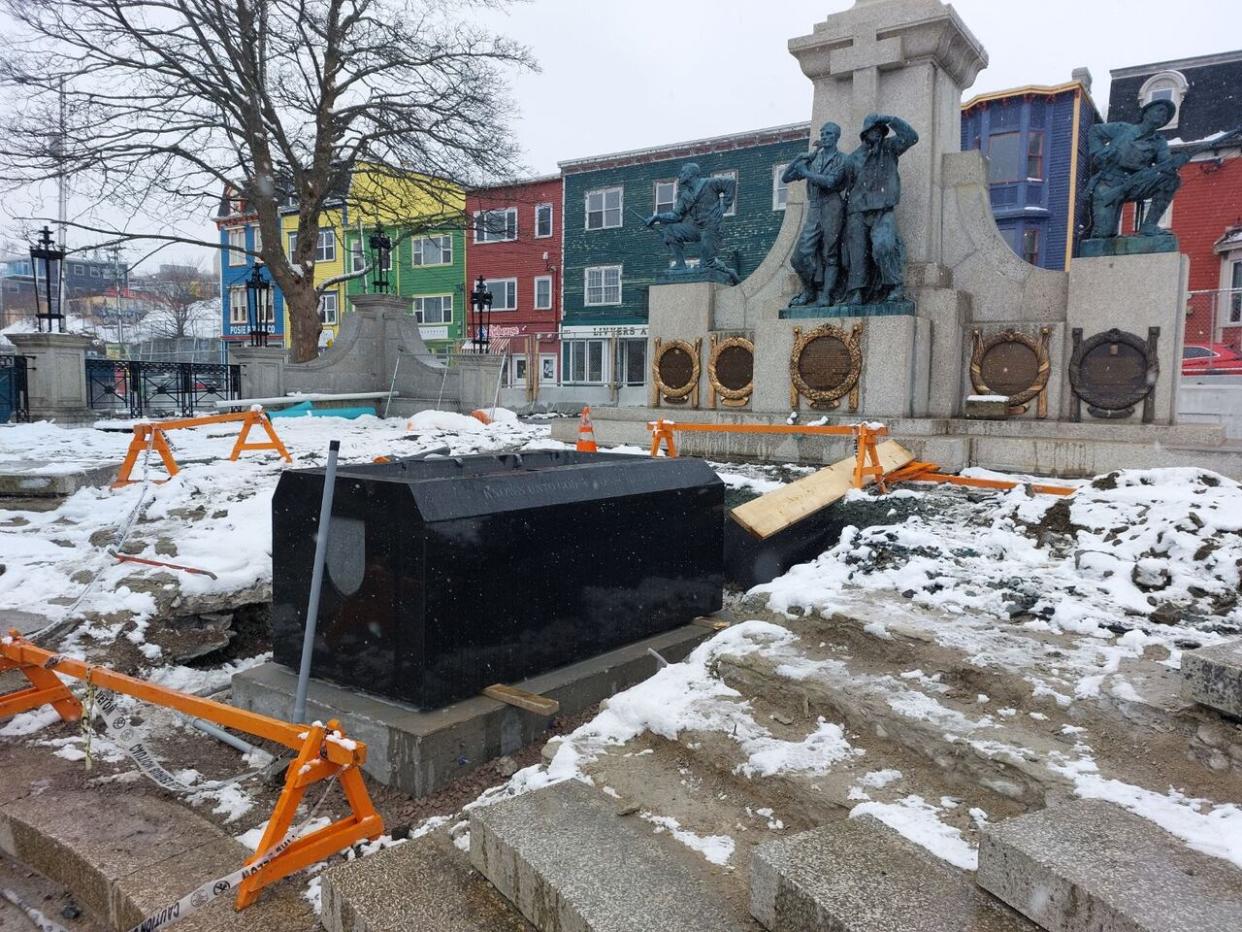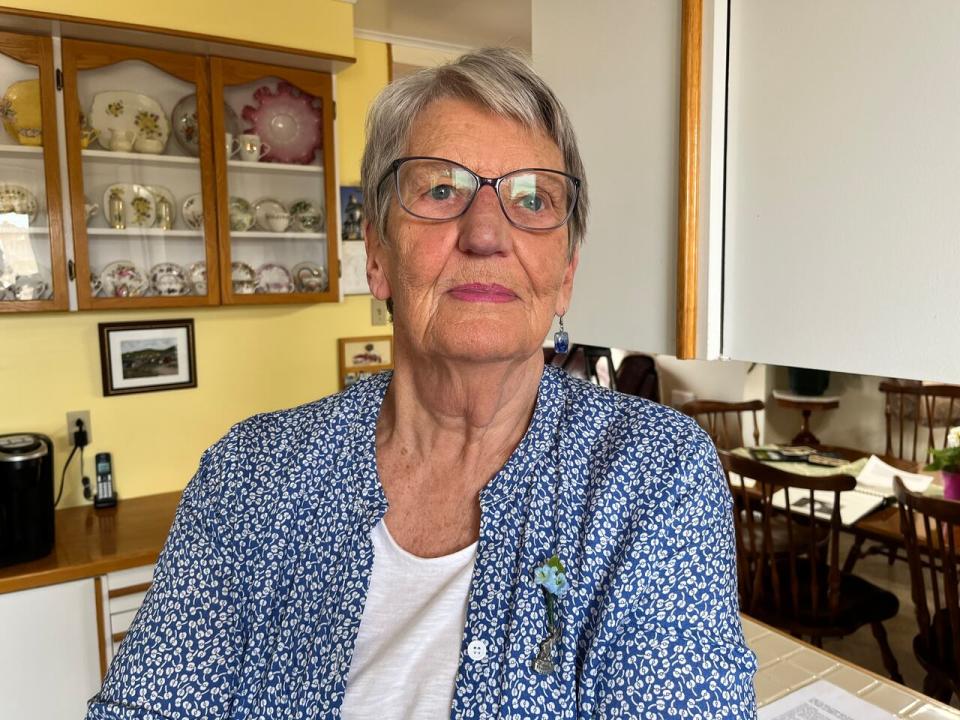A historic homecoming will take place Saturday as an unknown soldier returns to St. John's

A military aircraft is scheduled to land at St. John's International Airport on May 25, carrying the remains of an unknown Newfoundland Regiment soldier who died in northern France during the First World War.
It will be a historic homecoming for a soldier who went off to war more than a century ago, but fell in battle and was buried in an unknown grave. It will also be an important milestone in plans to mark the 100th anniversary of the unveiling of the Newfoundland National War Memorial in St. John's on July 1, and the creation of a tomb of the unknown soldier.
Following a brief ceremony at the Torbay Road side of the airport, the casket will be placed inside a hearse and taken on a route that includes a drive-past of landmarks with historical significance to the regiment and Newfoundland's participation in the war, including the former site of Camp Pleasantville near Quidi Vidi Lake, where soldiers trained, and the war memorial in downtown St. John's. The remains will then be placed in a secure location.
A lying in state will take place at Confederation Building from June 28-30 to allow members of the public to pay their respects.
On July 1, large crowds are expected to gather in downtown St. John's for the annual the Memorial Day remembrance service, and to mark the centennial anniversary of the Newfoundland National War Memorial.
Identity must remain unknown
The memorial grounds are currently undergoing a $6.5-million makeover, funded largely by the provincial government, which owns the site, while members of the Royal Canadian Legion serve as stewards over the memorial.
As part of the July 1 ceremony, meanwhile, the soldier's remains will be re-interred inside a newly constructed granite burial chamber at the base of the 100-year-old monument.
It will be just the second such tomb in Canada, with the National War Memorial in Ottawa adding a tomb of the unknowns nearly a quarter-century ago.
It's essential that the identity of the soldier remains unknown because he will symbolically represent all Newfoundlanders and Labradorians from all branches of service who have no known grave.
Newfoundland was a self-governing British Dominion during the First World War, and more than 12,000 Newfoundlanders served in military or support services during the conflict. More than 1,700 lost their lives during the war, and some 800 of those who died have no known grave.
Roughly 600 of those unknown graves are located in France and Belgium, according to the Commonwealth War Graves Commission, and are marked by headstones with the wording "Known Unto God."

Twillingate resident Eleanor Manuel has a special interest in the creation of a tomb of the unknown soldier in St. John's this summer. That's because her grandfather, Frederick White, was killed in France during the Battle of Beaumont-Hamel on July 1, 1916, and is buried in an unknown grave. (Terry Roberts/CBC)
Included among those with no known grave is Frederick White of Twillingate, who was killed at the Battle of Beaumont Hamel on July 1, 1916. The regiment was nearly wiped out on that day, with more than 700 of the roughly 800 soldiers who advanced that morning either killed, wounded or missing.
Frederick White's granddaughter, Eleanor Manuel, is proud that one of those unknowns will come home. The thought has crossed her mind, she told CBC News, that the remains could be those of her grandfather.
"There's something about the tomb of the unknown soldier that brings tears," she said recently during an interview at her Twillingate home.
"It brings tears because of the sacrifice they made and the families that were shattered. It's a bittersweet honour. Whoever it is, it's still a great honour to have to have our own unknown soldier."
The idea of establishing a tomb of the unknown soldier as part of the centennial anniversary of the war memorial was put forward by the Legion, with veterans like Frank Sullivan arguing that Newfoundland was an independent country at the time of the war, and should have its own unknown soldier.
Newfoundland became a province of Canada in 1949, and the province's name was changed to Newfoundland and Labrador in 2001.
The modern day commander of the Royal Newfoundland Regiment, Lt.-Col. Kyle Strong, said the soldier's homecoming is a yet another milestone for a unit with more than two centuries of history.
"That one individual represents so much more than just himself. It's the chance for people to recognize that all Newfoundlanders, regardless of what branch of the military they were in, all of them had an important role to play. And just the fact that that one individual can represent them all, it's a very small token of appreciation for what they did," said Strong.
Premier to serve as next of kin
A Royal Canadian Air Force passenger jet will depart St. John's on Wednesday morning with a delegation of more than 100 veterans, politicians, serving military personnel, and members of the media, and fly to the Lille airport in northern France.
The delegation will visit various war memorials, including those at Beaumont-Hamel, Monchy-le-Preux, Masnières and Gueudecourt.
The transfer of remains ceremony will take place at the Beaumont-Hamel Newfoundland Memorial on Saturday morning, with a bearer party of Canadian Armed Forces personnel, consisting of reservists based in Newfoundland and Labrador, accepting the casket from a French military bearer party.
Since the identity of the soldier is unknown, Newfoundland and Labrador Premier Andrew Furey will serve as the official next of kin during the transfer of remains ceremony. Furey and St. John's South-Mount Pearl MP Seamus O'Regan, the federal Minister of Labour, will also lay wreaths at Beaumont Hamel.
The casket will be transported to the airport in a hearse, under police escort, and the full delegation will participate in a ramp ceremony as the remains are loaded onto the aircraft.
The aircraft is scheduled to arrive at St. John's airport sometime after 7 p.m. NT on May 25.
The repatriation is being supported with a $3.5-million contribution from the federal government. A portion of that money is also being used to help fund the centennial upgrades at the war memorial.
Download our free CBC News app to sign up for push alerts for CBC Newfoundland and Labrador. Click here to visit our landing page.

